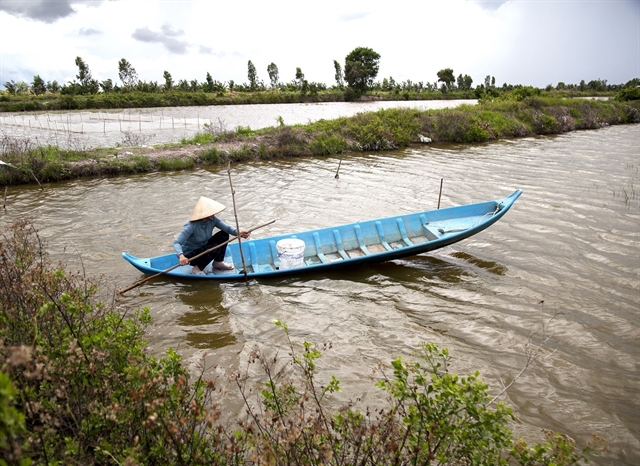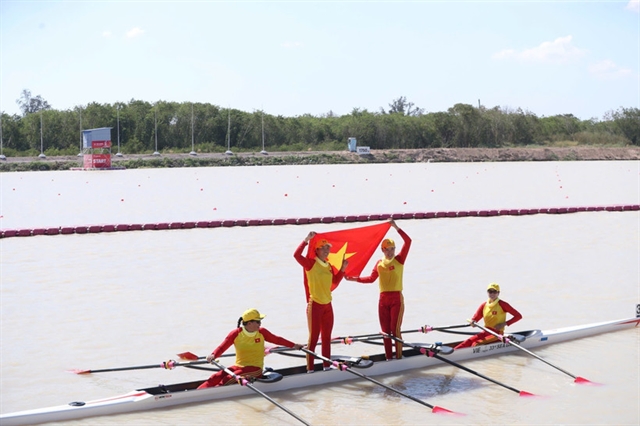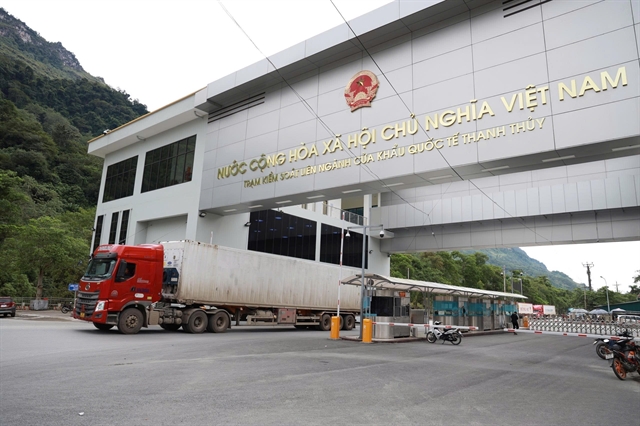 Society
Society

The country’s southernmost province, Cà Mau, is developing the collective agricultural economy to increase scale, yields and quality, and improve farmers’ incomes.

|
| Organic shrimp breeding ponds belonging to the Đoàn Phát Co-operative in Thới Bình District’s Trí Lực Commune. – VNA/VNS Photo Hồng Đạt |
CÀ MAU – The country’s southernmost province, Cà Mau, is developing the collective agricultural economy to increase scale, yields and quality, and improve farmers’ incomes.
The collective economy, especially co-operatives, helps increase linkages between farmers and between them and companies to enable agricultural production on a large scale and with high quality, and secure outlets.
Nguyễn Chí Thuần, chairman of the province’s Co-operative Alliance, said more and more co-operatives have developed the linkages to bring practical benefits to their members.
The benefits include getting inputs at lower prices than the market, having guaranteed outlets and getting higher than market prices for their produce, he said.
Agricultural co-operatives have expanded their scale, developed brand names for their products and set up farming areas for inputs, and these have enhanced their competitiveness, created jobs and improved members’ incomes, he said.
The province has 176 agricultural co-operatives and 790 agricultural co-operative groups, and plans to set up another 20 and 80 respectively this year.
It targets increasing the average income of workers and members of co-operatives to more than VNĐ50 million (US$2,100) a year.
The Đoàn Phát Co-operative in Thới Bình District’s Trí Lực Commune has been an efficient co-operative since its establishment in 2019.
Its 21 members rotate between organic rice and shrimp on a total of 450ha and earn an average income of VNĐ100 million (US$4,300) per hectare per year. They have one rice and shrimp crop each per year.
The province’s co-operatives achieved average annual revenues of VNĐ1 billion ($43,000) and an average income of VNĐ350 million ($15,000) last year. Their workers earned VNĐ36 million ($1,500) last year.
An increasing number of co-operatives produce the province’s speciality products and those under the country’s “One Commune-One Product” programme.
The development of OCOP products has helped improve product value and sales.
The province has 101 of them, including three rated four-star and 98 rated three-star in a system where the highest is five.
Many of them are produced from shrimp such as chips, flakes and dried shrimp.
Cà Mau, the country’s largest shrimp producer, has nearly 280,000ha of ponds and an annual output of 200,000 tonnes.
Exports
The province hopes to increase exports to $1.3 billion, mostly from agricultural products, this year, according to its People’s Committee.
Its exports were worth $275 million in the first quarter of this year, including $238 million from seafood.
Farm exports to demanding markets such as the EU, Australia, Canada, South Korea, and Japan increased last year, according to its Department of Agriculture and Rural Development.
Phan Hoàng Vũ, director of the department, said farmers are switching to an agricultural economy to ensure they have steady outlets.
With this and the department’s solutions, the agricultural sector is expected to grow significantly in the coming years, he said.
The province would enhance the role of the collective economy and make it a basis for restructuring agricultural production towards developing linkages between stakeholders to increase output and meet market requirements, he said.
Besides shrimp, the province also has favourable conditions for growing rice and other crops, and great potential for developing codes for them to increase their export competitiveness.
Under a plan to develop and manage codes for farming areas and packing facilities in 2023-25, the province aims to grant codes to 120-130 rice farming areas, 10 vegetable and fruit growing areas and two to three medicinal herb areas besides one to two rice and vegetable and fruit packaging facilities and two or three medicinal plant packaging facilities.
To acquire a code, a farming area should grow only one kind of plant and have a minimum required area and follow Vietnamese good agricultural practices (VietGAP) or other equivalent standards.
A fruit orchard, for instance, should be at least 10ha to get a code.
Nguyễn Trần Thức, head of the province Plant Protection and Cultivation Sub-department, said getting codes has helped agricultural produce meet the increasing requirements in global markets.
It also helps develop standard growing processes and farmers become aware of production cost and quality issues, he added. – VNS




